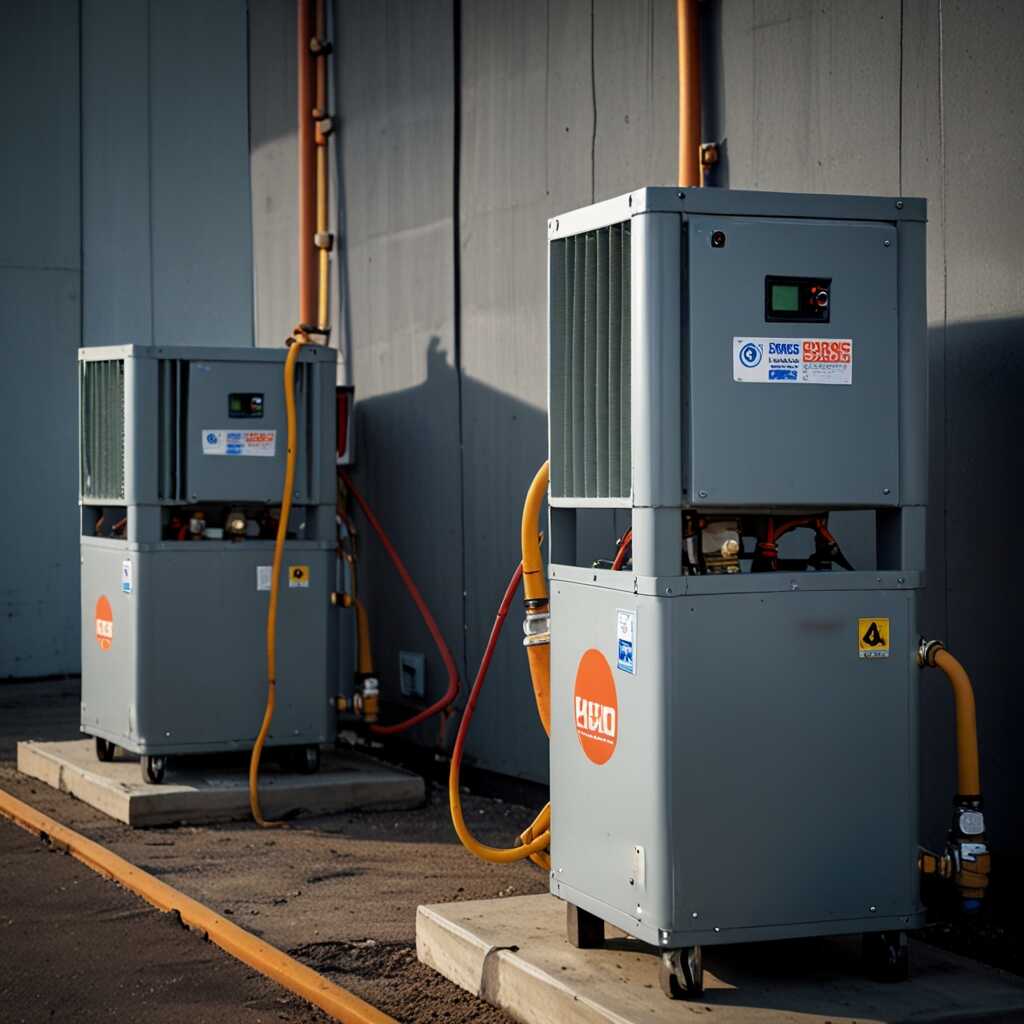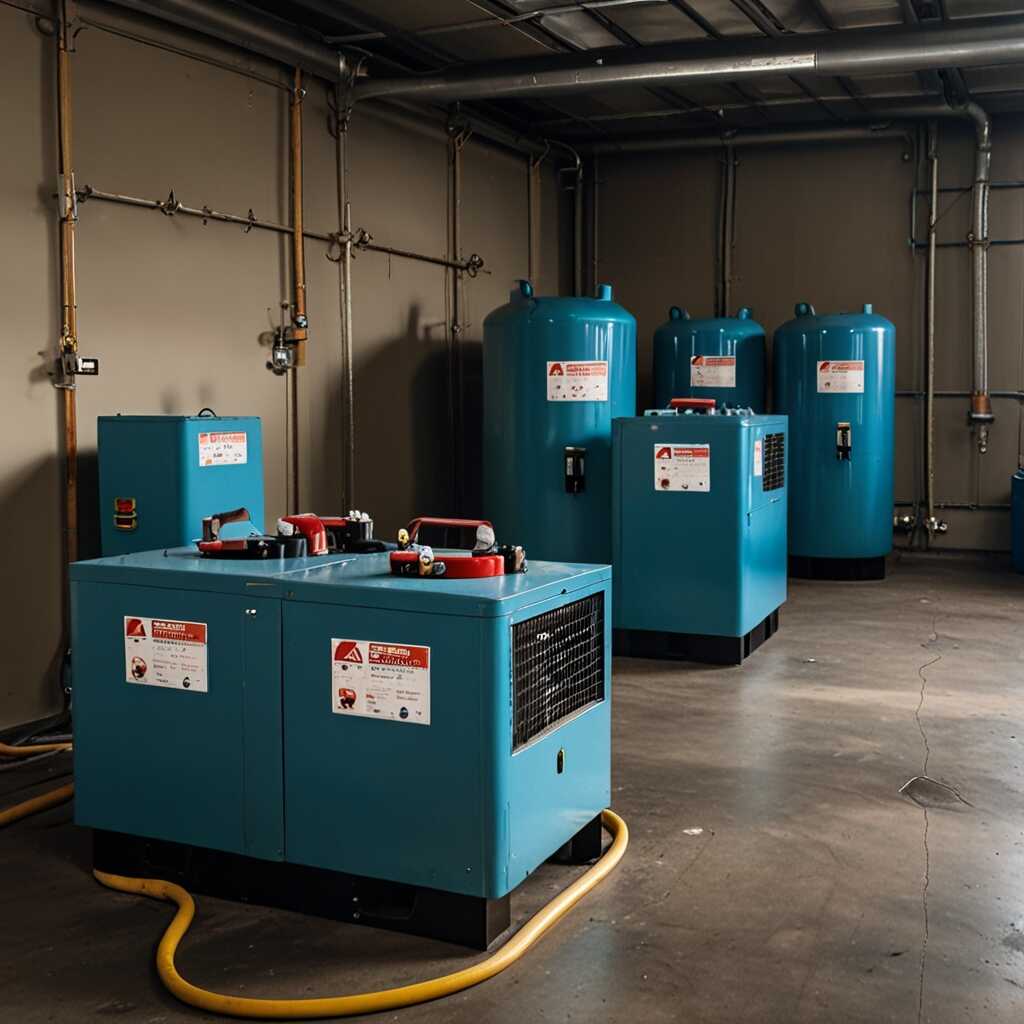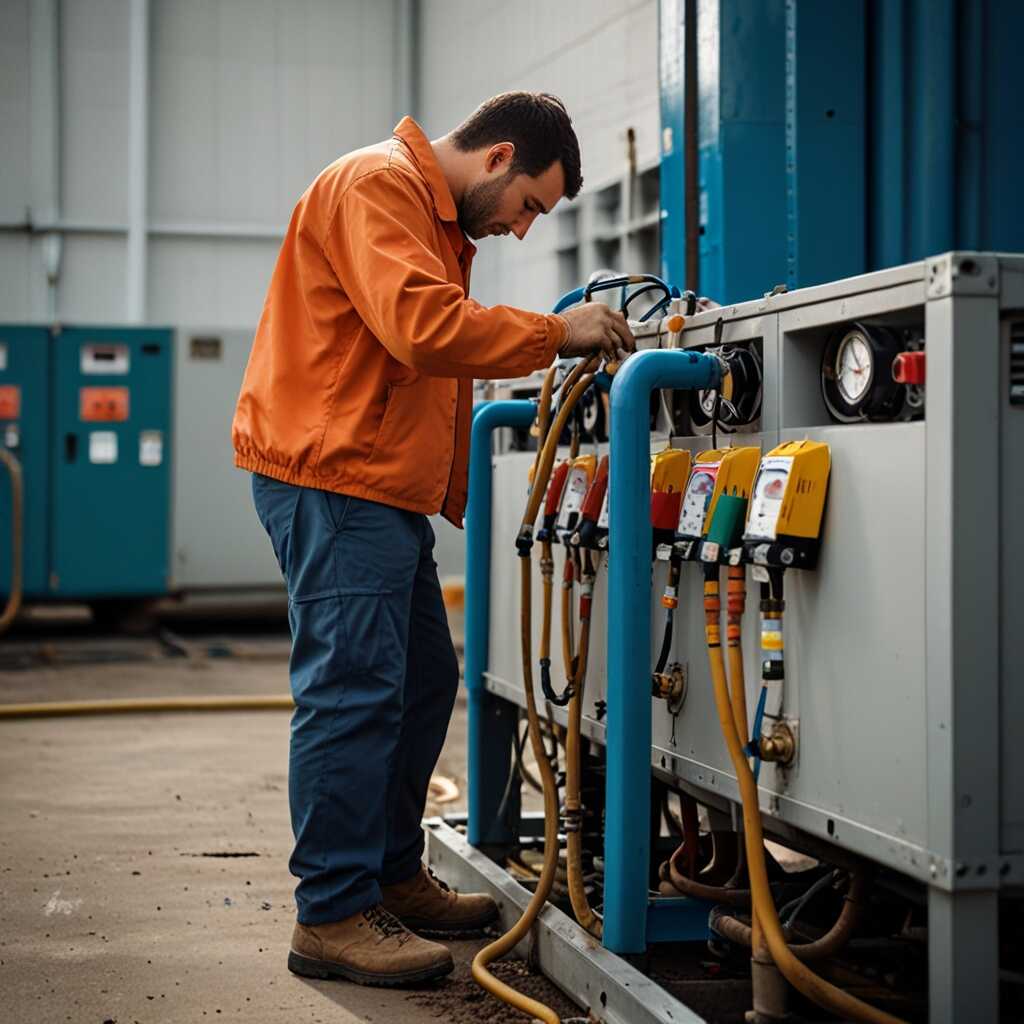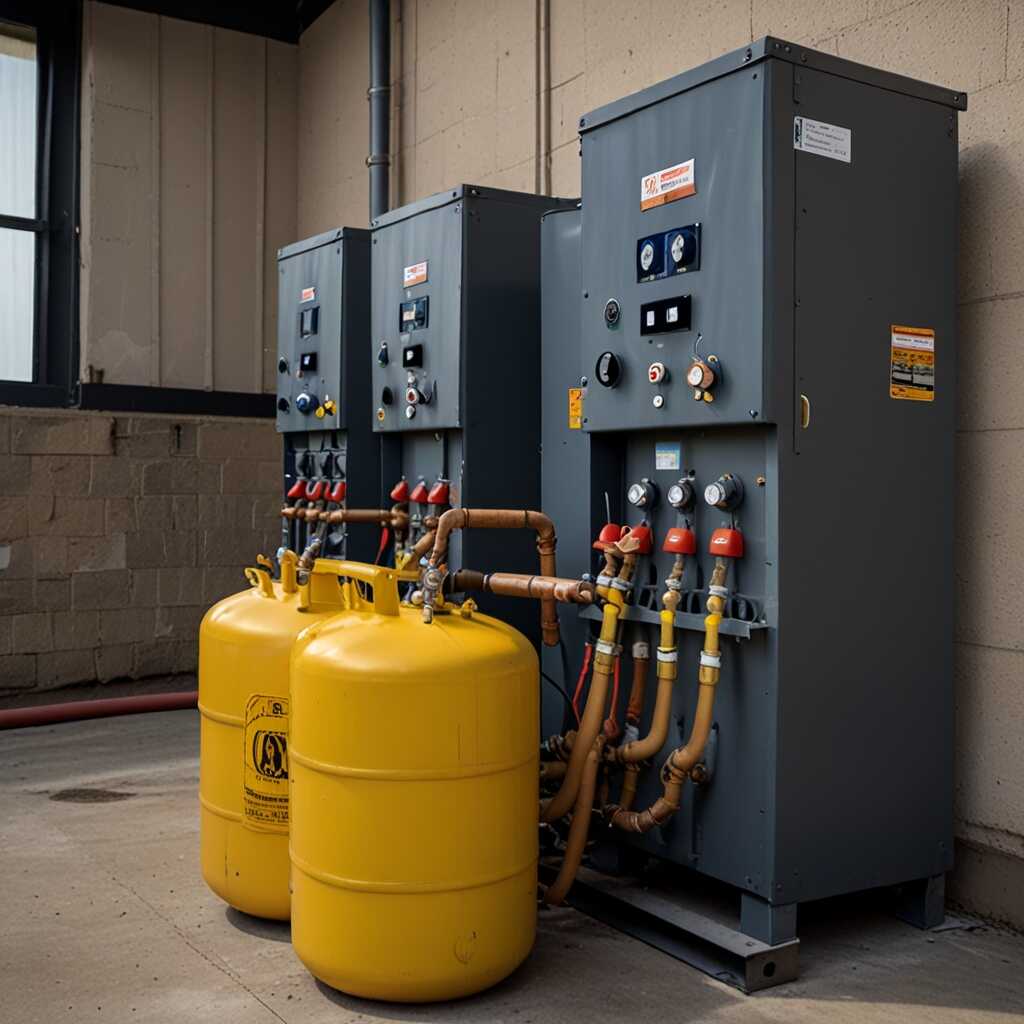Ensuring EPA compliance through proper refrigerant recovery certification is vital for HVAC professionals. This certification guarantees that technicians are trained to handle refrigerants responsibly and legally. Refrigerant Recovery Pro provides essential guidance on obtaining this certification, helping businesses meet EPA regulations and ensuring environmental safety. Understanding these requirements enhances operational best practices and supports sustainable HVAC management.
Understanding the Importance of Refrigerant Recovery Certification
Refrigerant recovery machine certification refers to the process where recovery devices are tested and approved based on EPA regulations. This certification is essential for HVAC professionals, as it helps ensure compliance with EPA regulations. Certified equipment enhances reliability in refrigerant recovery, minimizing environmental impact and promoting responsible practices. By using certified recovery machines, technicians can improve the efficiency of their operations and maintain environmental responsibility. In 2025, the EPA will enforce stricter compliance requirements, making it imperative for HVAC professionals to understand certification benefits thoroughly.
Key Benefits of Certified Refrigerant Recovery Machines
Certified refrigerant recovery machines offer numerous advantages for HVAC professionals. These machines are designed to meet rigorous EPA standards, ensuring efficient refrigerant recovery while reducing the risk of leaks. Certified equipment provides peace of mind, knowing it can handle various refrigerants safely. Additionally, using certified machines is crucial for gaining customer trust, as it reflects a commitment to environmental responsibility. Technicians can also rely on expert reviews and comparisons to select the best equipment, improving performance and compliance in their operations.
Legal and Financial Risks of Non-Compliance
Non-compliance with EPA refrigerant recovery regulations can lead to severe penalties. HVAC businesses risk fines up to $37,500 per day for ongoing violations. Furthermore, companies can face criminal charges, including imprisonment for responsible individuals. Notable HVAC companies, such as ABC Cooling and XYZ Heating, have faced penalties for neglecting refrigerant recovery requirements. Their experiences highlight the importance of proper training and certification. Ensuring compliance aids in avoiding such legal ramifications and establishes a proactive approach toward environmental responsibility.
Understanding the Importance of Proper Training and Certification
Proper training and certification are essential for HVAC technicians. Well-structured programs ensure that technicians understand EPA regulations. This knowledge significantly reduces risks associated with non-compliance. Technicians equipped with reliable skills are more effective in implementing best refrigerant recovery practices. Certification involves testing that verifies a technician’s knowledge and ability to handle refrigerants responsibly. Companies with certified personnel not only comply with regulations but enhance their business reputation. They are more likely to attract clients who value environmental responsibility.

Essential Practices for Effective Refrigerant Recovery
HVAC technicians should follow key practices for effective refrigerant recovery, such as using EPA-certified machines, conducting regular maintenance, and documenting recovery processes. These reliable machines ensure efficiency in recovery while minimizing environmental impact. Evaluating performance through testing and comparison helps technicians choose the best equipment suitable for various applications. In addition, training staff on these practices improves compliance with regulations. Many certified refrigerant recovery machines are tested for durability, enabling technicians to maintain high performance and reliability.
Choosing the Right Refrigerant Recovery Machine
Selecting the right refrigerant recovery machine involves considering factors such as recovery rate, durability, and ease of use. A high recovery rate is essential, aiming for a minimum of 90% recovery efficiency according to EPA guidelines. Certifications from trusted brands like Robinair, FJC, and Yellow Jacket enhance reliability. These brands provide equipment that is not only compliant with EPA standards but also designed for robust performance. Regular testing and reviews of these machines help HVAC professionals make informed choices, resulting in improved overall performance during the refrigerant recovery process.
Key Statistics Regarding Refrigerant Management Compliance
- Over 6 million HVAC units in the U.S. use refrigerants subject to EPA regulations.
- Approximately 20% of refrigerant emissions come from improper recovery methods.
- Proper recovery can reduce greenhouse gas emissions by up to 99%.
- EPA certified technicians are required to handle CFCs and HFCs correctly.
- Recovering refrigerants can save businesses thousands in replacement costs.
- Certification training can take 4 to 8 hours, depending on the program.
- Entities that don’t comply may face fines exceeding $37,000 per violation.

Training and Certification as Compliance Tools
Refrigerant recovery certification is essential for HVAC professionals as it enhances compliance with EPA regulations. This certification provides reliable knowledge on best practices for refrigerant management. It ensures that technicians are equipped with the necessary skills to handle equipment efficiently, which improves environmental responsibility. Maintaining certification through continuing education helps professionals stay updated on the latest regulations and technologies, resulting in safer operations and improved service quality.
Key Certification Programs for HVAC Professionals
Various organizations offer certification programs focusing on refrigerant recovery. These programs are designed to ensure technicians gain adequate knowledge and hands-on experience. The most recognized certifications come from the Environmental Protection Agency and other industry-standard organizations. Training programs often require 16 hours or more, depending on the course. A well-structured program includes testing and practical evaluations to confirm skill levels. Obtaining certification from reputable institutions greatly enhances a technician’s expertise and credibility in the HVAC field.

Innovations in Refrigerant Recovery Technology
The latest advancements in refrigerant recovery technology focus on efficiency, reliability, and compliance with EPA regulations. New refrigerant recovery machines are designed with features like advanced filtration systems and automated monitoring. These innovations can enhance operational efficiency significantly. Many new recovery machines offer a comparison of performance metrics, ensuring users find quality options. According to recent studies, the latest refrigerant recovery machines show a 20% increase in efficiency over older models. This improvement is essential for HVAC systems aiming to meet EPA compliance and environmental sustainability goals.
Key Features of Modern Refrigerant Recovery Machines
Modern refrigerant recovery machines include several key features that improve their overall performance and usability. These machines typically have high-speed recovery processes that minimize downtime and enhance efficiency. Advanced diagnostic tools provide real-time testing data, ensuring reliability. Many models are also built for easy portability, allowing HVAC technicians to move them comfortably across job sites. Additionally, some machines are equipped with user-friendly interfaces for fast operation and monitoring, making them ideal choices for HVAC professionals. These features help ensure that mandatory EPA compliance is met while also improving refrigerant recovery results.
Advantages of Obtaining Certification for Refrigerant Management
- Enhances understanding of current EPA regulations and best practices.
- Boosts company reputation as a responsible environmental steward.
- Enables safe handling of refrigerants, protecting workers and customers.
- Improves operational efficiency by minimizing refrigerant loss.
- Facilitates smoother inspections and compliance audits.
- Provides access to industry updates and professional networks.
- Encourages environmentally friendly practices that benefit the community.

Selecting the Right Certified Recovery Equipment
When selecting certified refrigerant recovery equipment, HVAC professionals must prioritize features such as reliability, operational efficiency, and EPA compliance standards. Key factors include the machine’s recovery rate, durability, and specific testing that ensures it can handle various refrigerants effectively. Consider reviewing top brands and models to identify essential features that enhance performance and efficiency. Research on user reviews can provide valuable insights into how well these machines perform in real-world applications.
Top Features to Look for in Recovery Machines
When evaluating refrigerant recovery machines, look for models that offer high recovery efficiency and are designed to meet EPA compliance standards. Machines should deliver reliable performance with a fast recovery rate, typically rated at over 90% effectiveness. Look for units featuring advanced technology like automatic shutoff and dual-stage compressors, which enhance recovery speeds and improve overall efficiency. Research from Refrigerant Recovery Pro provides expert reviews and comparisons, guiding HVAC professionals in finding machines that suit their specific needs.
Staying Informed on Regulatory Changes
Recent updates from the EPA emphasize the importance of refrigerant recovery practices. HVAC professionals must comply with stringent EPA regulations. These updates include enhanced tracking for refrigerants, improvements in recovery efficiency, and increased penalties for non-compliance. Understanding these regulations is essential for HVAC technicians and business owners to ensure they meet legal requirements. Various entities participate in enforcement. The EPA oversees regulations while local authorities and states may have additional compliance measures. As of now, it is anticipated that the EPA will issue over 1,000 refrigerant recovery certifications by 2025, enhancing the reliability and efficiency of HVAC operations.
Understanding the Importance of Compliance in Refrigerant Recovery
Compliance in refrigerant recovery is vital for HVAC professionals. Following EPA regulations helps enhance environmental responsibility and operational efficiency. Non-compliance can lead to penalties, affecting business reputation and reliability. The EPA’s compliance updates aim to improve the quality of refrigerant management systems in the HVAC sector. HVAC businesses that remain proactive in understanding these regulations can establish expert practices that lead to better performance. Regular training and utilizing reliable equipment can significantly improve refrigerant recovery practices. This proactive approach to compliance supports environmental goals and ensures HVAC professionals can deliver quality service efficiently.
Brands and Demographics Impacted by Refrigerant Recovery Practices
- Carrier offers reliable recovery machines preferred for residential services.
- Trane provides robust units ideal for commercial HVAC applications.
- Danfoss is renowned for energy-efficient recovery solutions targeting industrial users.
- Daikin focuses on advanced technology for environmentally conscious operations.
- HVAC technicians benefit from product training and hands-on support.
- Business owners value cost-saving options and compliance assistance.
- Students gain essential knowledge on regulatory requirements in classes.
Resources for HVAC Compliance and Training
HVAC professionals can access various resources for refrigerant recovery training and compliance. Some excellent resources include the EPA’s official website which provides essential regulatory updates. Reputable organizations like the Refrigeration Service Engineers Society (RSES) offer training programs and certifications. The website of Refrigerant Recovery Pro includes guides and equipment recommendations to enhance compliance. Industry reviews can also inform users about the effectiveness and reliability of different refrigerant recovery equipment. The EPA requires a minimum of 16 hours of training for certification, focusing on best practices in refrigerant management.
Exploring Refrigerant Recovery Certification Programs
Refrigerant recovery certification programs are critical for HVAC technicians to ensure compliance with EPA regulations. These programs often include hands-on training and testing to evaluate knowledge of refrigerant types, recovery techniques, and system management. Organizations like HVAC Excellence and RSES provide comprehensive training courses that cover these areas. Some programs even offer online options for greater accessibility. Investing in these programs enhances technicians’ skills and ensures they are equipped with the latest standards and best practices in the industry. Successful completion often results in certifications valid for several years, fostering ongoing professional development.